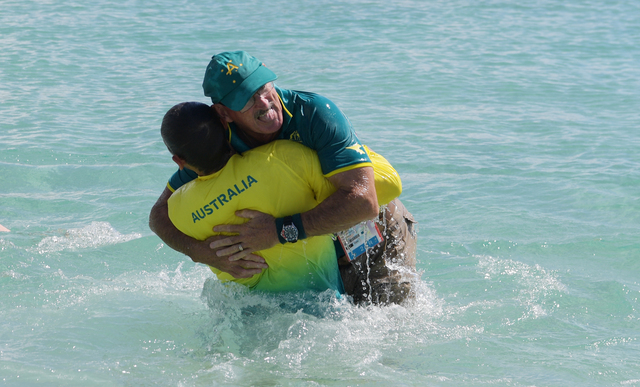Three words could be used to describe shiraz from the Barossa Valley: big, rich and bold. But there’s more to the Barossa than just opulent shiraz, with its flavours and structure changing as you head from north to south. Differences between rainfall and altitude and a wide range of soil types all play their part.
“The Barossa is made up of three major towns: Tanunda, Nuriootpa and Angaston, but (also) myriad hamlets,” says Wolf Blass winemaker Steven Frost.
For 100 years these hamlets produced wines of different styles until the large producers arrived, taking grapes from around the region and blending them to become the wines that helped launch a thousand shiraz ships.
“Traditionally the little producers in the Barossa were very town, or parish, driven. Being poor German settlers, there are little parishes – towns – where everyone had to travel by cart to their own little winery,”
Frost says.
“With mechanisation and as we’ve become bigger as an industry, some little guys have stayed true to their little spot, and bigger guys, like us, who have come along late on the scene in the ’60s and the early ’70s, are not limited to sourcing from their own little spot.”
Each year Frost makes shiraz from vineyards dotted through the Barossa and Eden valleys, before blending them to create the Wolf Blass suite of wines. Here are the differences he sees in shiraz from different parts of the Barossa Valley.
Southern Barossa
Starting at Lyndoch, the Barossa’s most southern sub-region has the lowest altitude and the highest rainfall. It’s surrounded by undulating hills, with deep, rich soils. The best wines come from vineyards on the hills. “The vines are richer and lusher,” Frost says. “We pick this region the earliest because it grows with more canopy and the fruit ripens faster. The fruit is generally more fragrant, charming and more in the soft plum and berry fruits and the least tannic and structured throughout the Barossa Valley.
Central Barossa
Heading north through to Dorrien, in the heart of the Barossa, the altitude rises to 260 to 300 metres. Gully winds from the Eden Valley cool the area in the early evening and lead to relatively cold nights.
The best-performing grapes are grown in deep, rich soil along the North Para River. “The wines all have fantastic, savoury tannins and blue fruit flavours. It’s quite unique,” Frost says.
To the north
“In the northern valley, in what the locals call Ebenezer but we can’t because the name has been trademarked, it’s higher again, at 320 metres,” Frost says. “As you travel north, the vegetation drops off. It gets cooler nights but conditions are harder during the day.
“Deep, rich-red clays hold the winter rains and the vines have to work hard to access that water. The slow, harsh conditions build more intensity in the wines and it provides the rich opulent style of Barossa shiraz everyone knows: bigger, richer, more powerful wines [than in the south], with rich plum and chocolate flavours.”
Wolf Blass has recently released a range of sub-regional Barossa shiraz under the Sapphire label.
TASTE THIS

Peter Lehmann Stonewell Shiraz 2010
(Barossa Valley) $100; 14%
5 stars
From vineyards in the Stonewell district known as “little black jewels” by Lehmann and his recently-retired chief winemaker Andrew Wigan. There’s something for everyone in this wine – as you’d hope for the price – with intensity, depth and effortlessness. Earth and spice lead to rich, dark berries, plum, black cherry, chocolate and coffee beans. The concentration and tannic framework are something to behold but it’s a wine of such opulence that it’s drinking delightfully now and will for many years.
Food match Braised beef cheeks
Tim Smith Shiraz 2012
(Barossa) $36; 14.5%
5 stars
Its class is evident the moment the wine is poured. Blackberry, black cherry, spice, dill, earth, glossy vanilla and cedar oak sing “drink me” from the glass. There’s a similar array of flavours on the silky palate, which has balanced intensity, super-fine tannins and bright acid that provides a lightness that makes it stand above the pack. There’s a good mix of dark berries and mocha on the finish.
Food match Barbecue lamb ribs
Langmeil Valley Floor Shiraz 2012
(Barossa Valley) $29.50; 14.6%
4 stars
Vineyards from 19 of the Barossa Valley’s original villages supply this delightfully fragrant wine. The combination of blackberry, wet stone, earth, blueberry and dried herb aromas is rich yet restrained. It’s lighter in the mouth than the aromas set you up for – smooth and juicy, with a light tanninic grip. It’s concentrated and well-structured with intensity, depth and length.
Food match Cheddar
Wolf Blass Sapphire Label Moculta Shiraz
(Barossa) $90; 14.5%
5 stars
In Wolf Blass’s 80th year comes a new range of wines aimed at showing off Barossa’s sub-regions. Moculta is in the northern part of the Eden Valley, overlooking the Barossa Valley floor. This has bright blackberries, blueberries, liquorice and spice. Its sweet, berry flavours are neatly matched by earthy tones and there’s a lightness that adds to its bright drinkability. Tannins are fine and structured, there’s plenty of oomph but it’s in no way heavy. Lengthy, too.
Food match Rare roast beef fillet
Zeppelin Shiraz 2012
(Barossa Valley) $21.99; 14.5%
4 stars
From a single vineyard in the Angaston foothills and made by accomplished Barossa winemaker Kym Teusner, who took a hands-off approach, according to the back label. The grapes were grown for power, with rich aromas of blackberry, blueberry, chocolate, liquorice, coal, tar, with similar, bold flavours. It’s big and slippery, with just enough acid and powdery tannin to hold the structure together, leading to a hedonistic, lengthy finish.
Food match Lamb and mushroom kebabs
Follow Ben on Twitter @senorthomas







